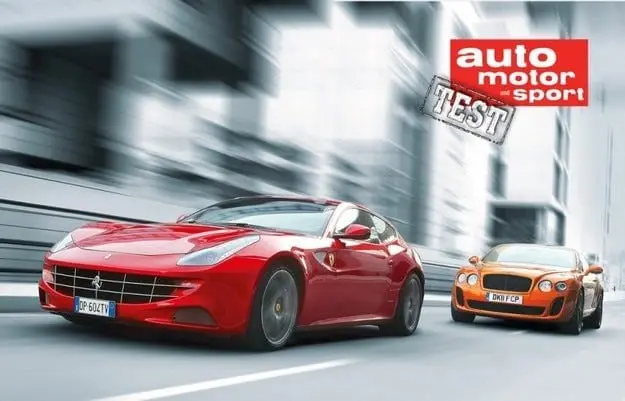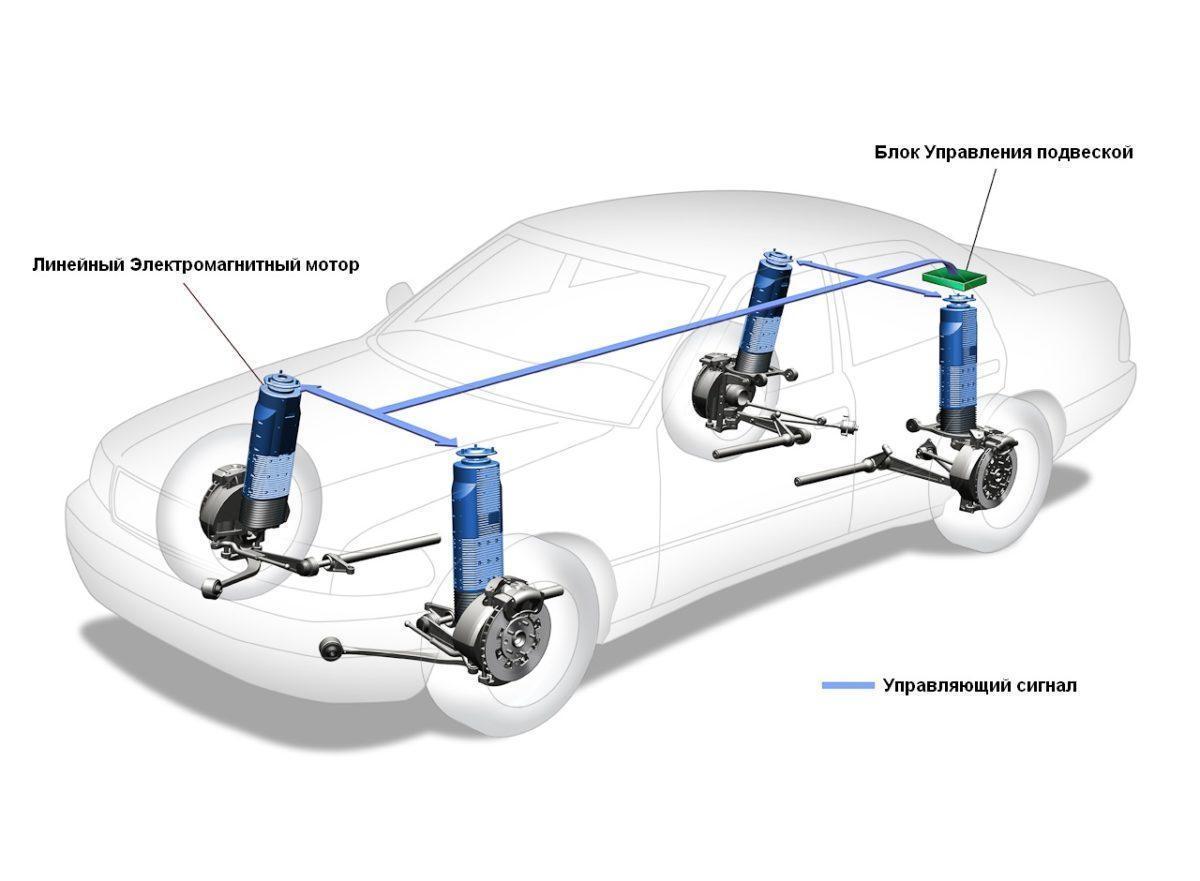
Test drive Ferrari FF against Bentley Continental Supersports: Summit
Content

With dual drivetrains, a large trunk and a V12 engine, the most practical Ferrari of all time clashes with the sportiest Bentley. Who will win this unusual duel?
Let's talk about stems. Yes, that's right - this is the place about which in sports cars, in principle, not a word is said. This topic is avoided for the simple reason that heavy-duty vehicles are often as dynamic as a classic 19th-century carriage. Just imagine for a moment a Ferrari XNUMX and Renault Kangu standing next to each other - now you understand what we are talking about, right?
GMO
However, Scuderia decided to create a model, the most interesting features of which are concentrated in its so-called rear end: objectively, the FF can be considered something special in the world of sports cars. The model shocked many with its large luggage compartment door and a standard luggage compartment of 450 liters. On the trunk, in turn, a massive bulge is clearly visible, under which the gearbox is hidden. The FF plays the role of a kind of Swiss army knife in Ferrari's cavalry, but that doesn't stop it from sticking to key details such as a seven-speed dual-clutch transmission in the drive axle, developed in collaboration with Getrag.
Up front, the FF has a powerful V12 engine, perhaps the only thing in common between the 4,91-metre-long car and its much-loved Scaglietti predecessor. And since Maranello apparently took the challenge of building the first truly practical Ferrari seriously, the new model also features an extremely innovative dual transmission system.
Think fast!
Until recently, the pride of northern Italy often shared space in the garages of its solvent customers with the British aristocracy in the form of Bentley, and this seems quite logical - one car is designed for leisurely recreation, and the other for the racetracks. However, from that moment on, the two companies become competitors.
The Continental Supersports has a 370-litre boot and a little clearance in the backs of the rear seats for longer loads - British model equipment it has to deal with with golf bags and Louis-Vuitton kits. However, the truth is that the FF's rear cabin is much more comfortable to travel than the elegant but narrow alcove with cross-stitched upholstery in the Bentley. Ferrari's victory on this metric deserves to be written in capital letters - it doesn't happen every day.
Direct comparison
However, the FF remains a true Ferrari, which in terms of the interior automatically means 98 percent satisfaction. The cockpit smells like genuine leather, and plenty of polished carbon also looks more than good. But the FF lags far behind the Bentley in precision and ruggedness, with its hand-crafted airflow guides and literally microscopic joints between parts – here the difference between the two cars is no less than the distance between Emilia-Romagna and Crew.
Occasionally a creak can be heard from hidden corners in the FF's body. The Italian sportsman's adaptive suspension responds more aggressively to hard hits on the pavement, while the 2,4-tonne Supersports handles bumps in the road with the disdain that Queen Mary looks at the light waves of the sea. On the other hand, on undulating bumps, the Bentley shakes more than the FF. The FF's steadfast calm in fast corners is remarkable - the 1,9-tonne car is glued to the road, the achievable lateral acceleration figures are staggering, and comfort remains at a good level.
How did Ferrari achieve this? The FF is 1,95 meters wide, making it almost as wide as a truck, and when we add a low center of gravity and a wheelbase 25cm longer than a Bentley, Ferrari's design advantages seem obvious. The difference of 388 kilograms does not even make sense to comment on ...
Technique
Under the Ferrari's hood, you'll find a 6,3-liter V12 engine mounted behind the front axle with a rare 65-degree bank-to-cylinder angle. Bentley has a 12-degree W72 bi-turbo engine that isn't as compact as its Italian rival and therefore takes up much more front area. The FF is a front center engined vehicle with a more weight balance towards the rear axle - regardless of the presence of an optional dual transmission module mounted at the front of the vehicle.
The so-called PTU module covers the first four gears of the gearbox and, together with the F1-Trac traction control system developed by Ferrari and the electronically controlled E-Diff rear differential, ensures optimal traction on each of the four wheels. All this work of engineering gives the car an impressive neutrality - even in the snow. With a much more direct steering system than the Bentley, the car enters the corners like a racing kart - the endorphins in the driver are guaranteed.
Sometimes there are downsides
The four-seat Italian model never manages to hide its racing genes. During smooth transitions (and Ferraris are expected to do this at least some of the time) the brakes are unnecessarily "poisonous" and the overly sensitive steering often makes it impossible to change direction smoothly. In this regard, the FF remains unrestrained Italian macho - albeit with a trunk.
The Crewe is the exact opposite: always calm, the eight-speed automatic transmission with a classic torque converter shifts gears seamlessly, the brakes are super-efficient yet smooth enough, and the permanent dual drive with Torsen differential ensures perfect traction without any interference. At the same time, all of the above, surprisingly well tuned steering is smooth and precise. As you might expect, the car shows a clear tendency to understeer in borderline mode, but this happens much later than you might expect. The handling is precise and precise, although it doesn't look like a supercar. Obviously, this is not necessary, since Bentley drivers are traditionally not fans of too extreme driving.
Sprint disciplines
On the straight, the Crew is a real rocket - with a deep rumble and the whistle of turbochargers, the British cruiser blows 630 hp on the road. and 800 Nm. However, it doesn't stand a chance against Ferrari's 660 racehorses.
The naturally aspirated V12, accompanied by euphoric high-frequency tuning, responds instantly to any throttle, providing almost inexhaustible reserves for frantic acceleration, and the result is: the time to reach 200 km / h is 2,9 seconds better than the Bentley.
Well, it's true that the fuel consumption in the test was extremely immodest - 20,8 l / 100 km, that is, about two percent more than the Bentley. But the truth is that anyone who intends to seriously discuss such topics, categorically cannot afford either of the two cars in this competition.
So let's talk about the characters: if you have a lot of money and you are looking for space and hot temperament, then bet on a Ferrari. If you prefer to drive quietly and simply have fun, choose a Bentley.
text: Alexander Bloch
a photo: Arturo Rivas
Evaluation
1. Ferrari FF – 473 points
There is no other four-seater that can be easily driven in the FF, neither can offer more cabin space. The 7-year Complimentary Package offset the € 30 higher price tag than Bentley.
2. Bentley Continental Supersports - 460 points.
The sportiest Bentley delivers excellent build quality and an impressive driving experience. However, to defeat the FF, it will need less curb weight and a more spacious cabin.
technical details
| 1. Ferrari FF – 473 points | 2. Bentley Continental Supersports - 460 points. | |
|---|---|---|
| Working volume | - | - |
| Power | 660 k.s. at 8000 rpm | 630 k.s. at 6000 rpm |
| Maximum torque | - | - |
| Acceleration 0-100 km / h | 3,9 with | 4,2 with |
| Braking distances at a speed of 100 km / h | 34 m | 36 m |
| full speed | 335 km / h | 329 km / h |
| Average consumption fuel in the test | 20,8 l | 18,6 l |
| Base Price | 258 200 euro | 230 027 euro |
